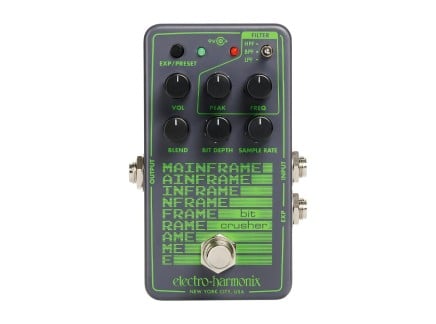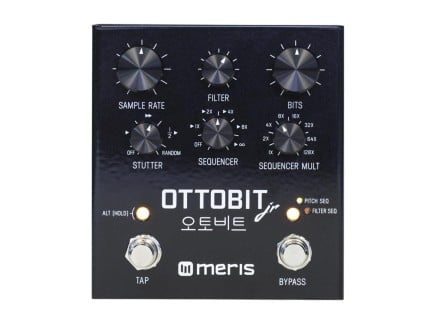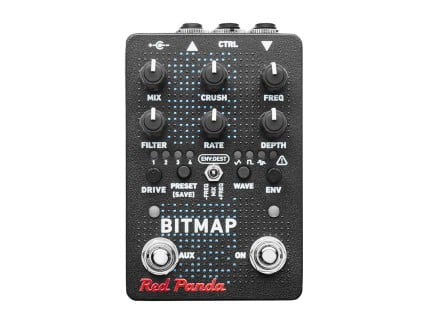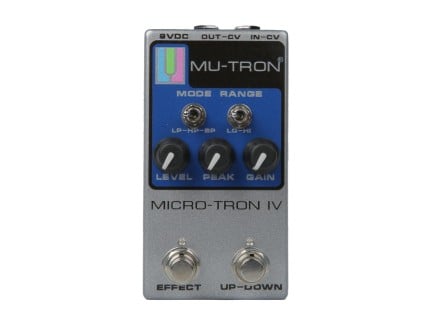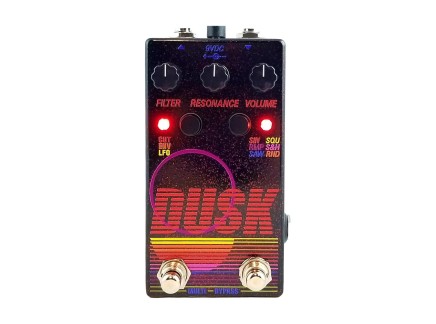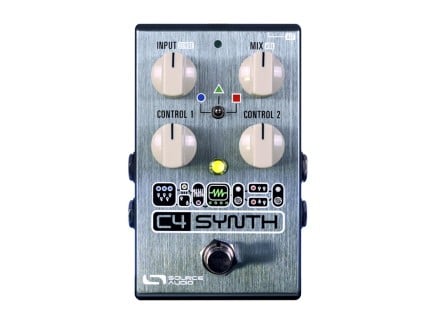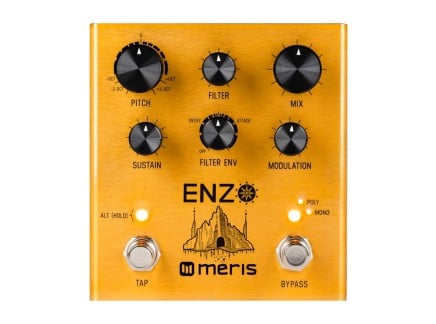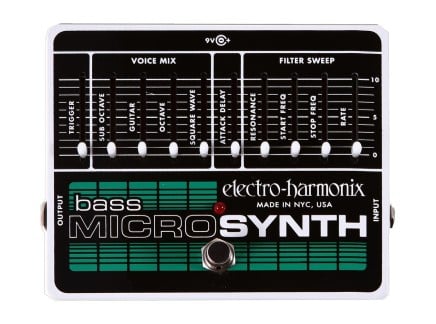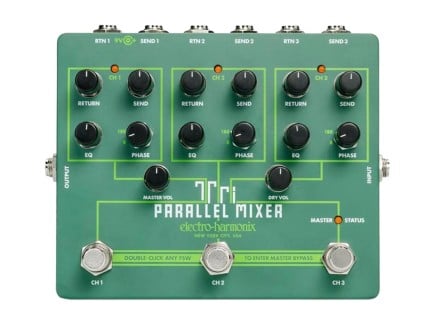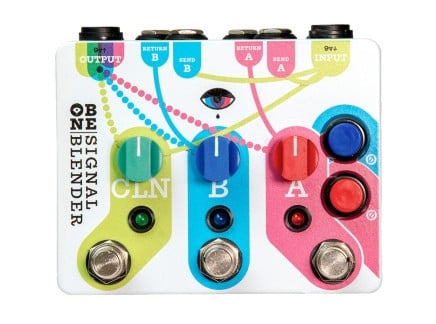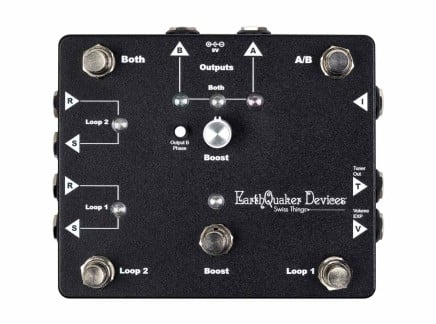If you're here, it could mean only one thing: you're looking for ways to make your bass (or other acoustic instrument!) sound like a synthesizer. Well, friend, you're in luck—check out the video above, in which our pal Bryce talks through five of his favorite ways of wrenching synth sounds out of his electric bass (and electric upright bass, whoa).
And for those who are curious, keep reading on—we'll discuss each of Bryce's ideas in a little more depth, but more importantly...we'll address the bigger question: why would you want to make an instrument sound like a synth in the first place?
Why Make Your Bass Sound Like a Synth?
The idea of turning acoustic instrument sounds into synth sounds isn't exactly new—in fact, we've touched on this topic a number of times on Signal, including our article on Audio-Controlled Synthesis and an article covering some of bassist Janek Gwizdala's favorite ways of making his bass sound like a synth. So, it's not the first time we've touched on this topic, and probably won't be the last—because it's an idea we truly love, and an idea that you can explore about a thousand different ways.
But why would you want an acoustic instrument to sound like a synthesizer? There are loads of potential reasons, some more obvious than others. On the more obvious end of the spectrum are some practical reasons: maybe you're playing in a band and need to cover some synth lines on a couple of songs, but you don't have a synth player! Perhaps you don't particularly want to spend the money to buy a synth, and you want to instead focus on soundmaking with the tools you already have on hand. Perhaps you're simply not a keyboard player, but you want to have access to classic synth sounds for your music—these are all perfectly valid reasons to find ways to turn your preferred instrument's sound into something more synth-like.
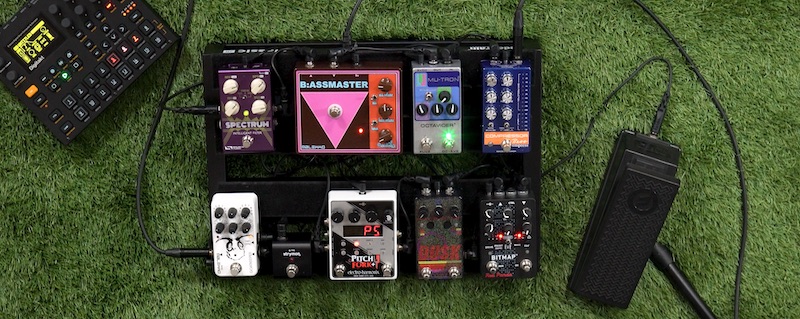
The other reason—the one that really gets my own creative wheels turning—hinges on the fact that the most amazing aspect of electronic instrument design is that sound generation is, to an extent, decoupled from the user input structure, unlike on acoustic instruments. This idea was discussed by instrument designer/inventor Don Buchla in interviews around the release of the Buchla 400 in the early 1980s: electronic instruments feature some sort of user input structure (could be a keyboard, touch plates, joysticks, or really any measurable source of information), an output structure (the sound generation system itself), and a sort of "language" in-between: a system of logic that directs information from the input structure to the output structure. The interesting implication of this concept is that any performance interface hypothetically could be made to "control" any electronic sound source—making for a perhaps infinite number of ways to make/play electronic music.
One downstream implication is that you don't necessarily need to be a keyboardist or a "synth player" in order to make synth sounds...and in fact, you can simply modify the sound of your instrument until it effectively sounds like a synthesizer. And when you do, you'll find that suddenly, your relationship with the instrument transforms. Even if it's an instrument you're very familiar with, it suddenly will take on a new life: one where familiar actions can lead to unexpected and nuanced sonic results difficult to achieve with a more typical synth setup. By leveraging the skill you have on a particular interface (a guitar or bass, for instance), you can perhaps uncover sounds and sonic interactions that haven't ever been achieved before...significantly deepening your relationship with your instrument, and carving out a unique sound that is yours alone.
I'm deeply passionate about this idea and could talk about it for days—so I'll reserve some of those thoughts for future articles and videos. For now though, let's talk through some of Bryce's techniques for transforming the sound of his bass. Keep in mind as we go that, while these do sound sick on bass, they'll translate to nearly any instrument out there...so keep your ears open as we go along. You don't necessarily need to be a bass player to take advantage of these techniques.
Turning Your Bass Sounds into Synth Sounds: The Classic Approach
Bryce's "classic approach" to using a bass to make synth sounds dates back to the 1970s—a time when signal processing tools were first finding their way into the hands of performing musicians. Players quickly gravitated to bizarre new devices from companies like Maestro and Mu-Tron, eager to explore new ways of bringing their instruments to life.
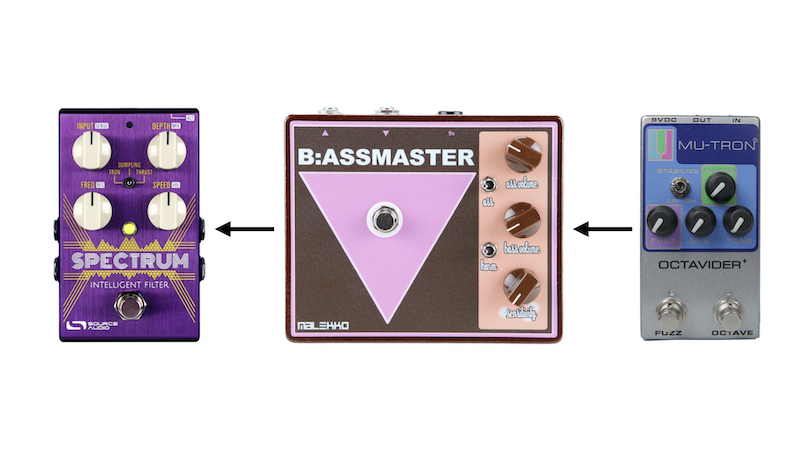
The basic idea involves an octave pedal running into a gated fuzz, and then into an envelope filter. The octave pedal (in this case, Mu-Tron's Octavider+) adds an intense, thick low-end that already significantly deepens the sound of the bass. Following this with a gated fuzz simultaneously adds harmonic content and makes the beginnings and endings of your notes a bit more abrupt, turning the natural dynamic contour of the bass into something more artificial and synth-like. We're using the Malekko B:ASSMASTER as the gated fuzz in our example.
The last (and quite crucial) step in this signal path is the envelope filter: a filtering pedal which uses the loudness of your incoming sound to automatically sweep the filter's cutoff frequency. In the 1970s, this effect would have been achieved with something like a Mu-Tron III, a groundbreaking pedal developed specifically to make guitars sound more synth-like, used by everyone from Stevie Wonder to Jerry Garcia. In our case, we're using a Source Audio Spectrum, which contains several excellent filter models, including a solid model of the aforementioned Mu-Tron III. Of course, keep in mind that any octave pedal, gated fuzz, and envelope filter could work for this—so feel free to experiment with whatever pedals you happen to have on hand! And try out different settings on each pedal...you'll quickly find there's a lot of range available with this combination of effects.
This approach was spearheaded by players like Bootsy Collins of Parliament-Funkadelic—and it's still a potent sound to this very day. By turning the sound of the bass into something more like a synth's oscillators with the octave pedal and fuzz and then passing it through a filter, we're creating a crude approximation of a synth's signal path...but rather than the rock-solid, predictable behavior of a synth, we add nonlinearities and nuance that can only come from using an acoustic instrument as the source. It's pretty rad.
Turning Your Bass Sounds into Synth Sounds: Sub Bass
Bryce's Sub Bass signal flow is inspired by players like John Davis (of Nerve), Squarepusher (think "Boneville Occident"), and Janek Gwizdala. In many ways, it's similar in concept to the previous patch—but instead of relying on classic 1970s-esque signal processing, it hinges on exploiting some of the unique sonic weirdness that digital signal processing can provide.
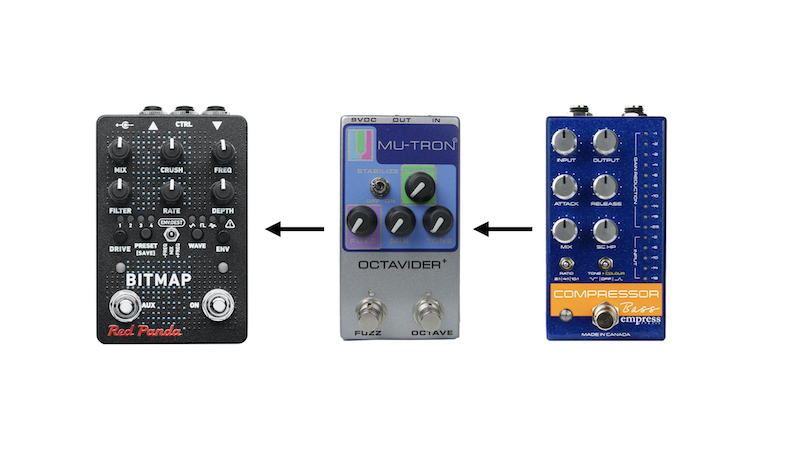
In this approach, we start with a compressor in order to significantly squash the bass's dynamic range, creating an artificial sustain with unnatural attack and decay characteristics. Then, we send the signal into an octave pedal set fully wet—completely eliminating any semblance of the original bass tone. Using the compressor before the octaver has another useful side effect as well: it significantly improves the octave tracking, eliminating some of the peculiarities that can emerge when pitch tracking more dynamic/inconsistent signals.
Now that we have a full, bassy octave sound with a very consistent dynamic level, we get to the real core of this approach: the bitcrusher. By introducing downsampling on this low synth-like tone, we start to get bizarre inharmonic overtones (a result of digital aliasing). This is a highly unnatural sound—one that we associate more with synthesizers and computers than electric bass. As such, it's a great trick to turn to when aiming to turn your instrument into something a bit more alien-sounding. It has a flavor similar to ring modulation, albeit a bit more controlled.
As with the prior approach, there are a lot of ways to vary the sound! We're using an Empress Bass Compressor, the aforementioned Octavider+, and a Red Panda Bitmap 2 for this patch, but any similar pedals should get you into the same territory. Try different sample rate reduction and bit depth reduction levels on your bitcrusher, different octave settings, or even different compressor settings. Each will have a different and equally bizarre effect...and at the end of the day, basically anything you do with this signal path will sound much more synth-like than it does bass-like.
Turning Your Bass Sounds into Synth Sounds: Sub Bass Extended
Bryce's third synth signal flow idea combines concepts from the prior two. In essence, it maintains the Sub Bass patch as its front end, but adds a filter at the end—allowing for further synth-style manipulation of the downsampled/bitcrushed sound.
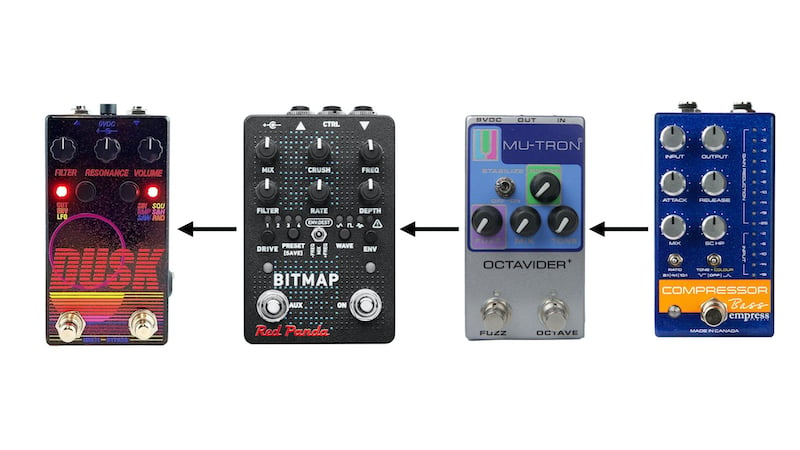
One interesting thing to consider with this patch, though, is that we don't necessarily need to use an envelope filter. In fact, envelope filter pedals can be a little limiting in these applications, especially when we're significantly compressing the sound before it ever gets to the filter altogether: since the envelope filter relies on mapping the incoming sound's loudness to the filter's cutoff frequency, it's much more interesting to provide it with dynamic material rather than our hyper-compressed sound. But there's more than one way to modulate a filter: in this example, Bryce uses and expression pedal with Dr. Scientist's Dusk to create rhythmic filter sweeps with his feet, rather than relying on the instrument's articulation for changing the filter cutoff frequency. Of course, using a sequencer or LFO (like EHX's 8-Step Program or OBNE's Expression Ramper, respectively) could be another way to introduce synth-like filter automation here...the sky's the limit!
Another interesting aspect of this example doesn't have to do with the pedal choice per se, but with Bryce's choice of instrument: an electric upright bass. By switching to a fretless instrument, he's able to emulate continuous pitch bends/glissando common on synthesizers. And while we don't all have a fretless bass or and upright bass lying around, it's possible to achieve this effect with many pitch shifting pedals (like Meris's Hedra, for instance), either by themselves or with the aid of an expression pedal for foot-controlled pitch bends. For that matter, keeping expression pedals and alternate control methods in mind as you build your synth-like pedal signal flows is a great idea: synthesizers are as much about creating unique, nuanced means of controlling or automating sound as much as they are about the sounds themselves...so some clever foot control can be the key in turning your ostensibly acoustic instrument into something considerably more uncanny and electronic-sounding.
Turning Your Bass Sounds into Synth Sounds: Synth Pedals
Of course, one fairly obvious solution we haven't mentioned as of yet: if you want to turn your instrument sounds into synth sounds, why not use a synth pedal? Synth pedals are an awesome, all-in-one place to transform your instrument's sound—and while they aren't always as customizable as the more modular, multi-pedal approaches we've discussed so far, they can be a quick, simple, and inventive way to cut straight to the chase of making your instrument sound like a synthesizer.
There are tons of synth pedals out there, including the classic-yet-regrettably-discontinued Digitech Synth Wah/Bass Synth Wah (which we love), and the current-day Electro-Harmonix Bass Microsynth and Source Audio C4.
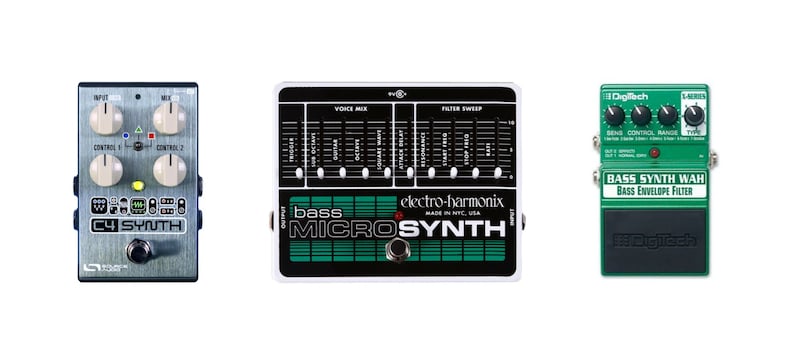
The older version of the EHX Bass Microsynth is a favorite of the Gap Band and players such as Juan Alderete (Racer X, The Mars Volta, Marilyn Manson). Using your instrument's incoming audio to control an actual analog synth voice—complete with oscillator, envelope, and resonant lowpass filter—you can absolutely nail the sound of an analog synth. This isn't so much like processing your bass or guitar until it sounds like a synth; instead, you're actually using your instrument to control a real analog synth. It's pretty wild...and if you need earth-shaking synth sounds at the tap of a footswitch, this is a killer one-stop shop.
The C4 is an altogether more flexible pedal which uses a web editor to approximate the workflow of using a patchable modular synthesizer. The user interface on the pedal itself is fairly minimal, so it does require spending time with the editor to build up a set of presets you can call up for your own purposes. While that workflow won't suit everyone, it does make for an absolutely insane level of customizable sonic options...everything from simple filtering/processing to transforming simple incoming sounds into cascades of sequenced synthesizer textures. It's impossible to describe here everything that it can do—but if you're down to use a web editor and you want a ridiculous level of control over your guitar synth sounds, the C4 is indispensable.
There's no shortage of guitar synth pedals out there, each with their own workflow and sonic character. Other recent favorites include the Meris Enzo, Boss SY-200, Empress ZOIA, and Poly Effects Beebo...but the list goes on!
Turning Your Bass Sounds into Synth Sounds: Blending + Layering
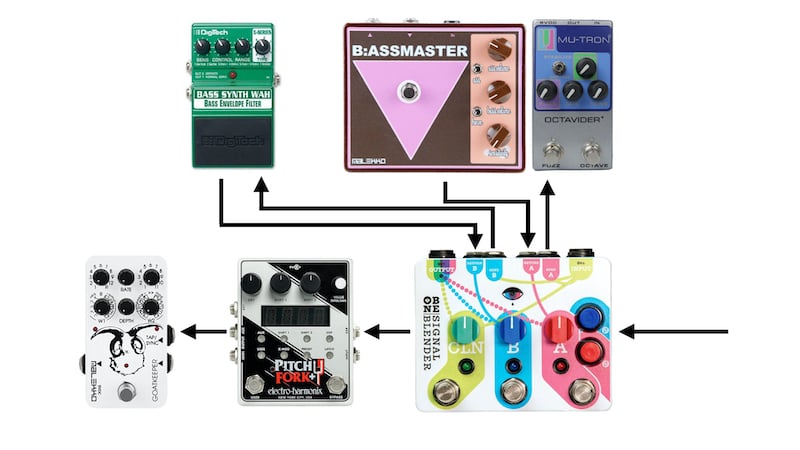
Our last idea for now is also perhaps the most open-ended, in that it's not so much about specific pedals, but instead about a concept in signal routing. Most pedalboards are set up so that all effects run in series—each pedal's output running into the next pedal in line until the signal eventually reaches an amp. In this scheme, every effect has an influence on the character of all of the effects after them...but things don't necessarily need to work this way.
Instead of working with all your effects in series, you can instead come up with clever ways of running multiple processing chains in parallel, allowing you to blend together different types of isolated processes to create something like a layered, multi-timbral synth patch. In Bryce's example, he's using an Old Blood Noise Endeavors Signal Blender to access two independent, parallel signal paths: one with an Octavider+ running into the B:ASSMASTER, the other with the Bass Synth Wah. These can be blended together with the dry signal and then sent along to further effects—in this case, an expression pedal-controlled EHX Pitch Fork+ pitch shifter running into a Malekko Goatkeeper tremolo for some gnarly pitch sweeps and dynamic chops.
While we absolutely love the OBNE Signal Blender, as before, there are alternatives out there: one of our other favorite pedalboard signal routers, for instance, is the EHX Tri Parallel Signal Mixer, an awesome way of blending up to three independent signal paths in parallel.
Laying Down a Foundation
So we've talked through a number of approaches to making a bass guitar sound like a synthesizer—but the important thing to keep in mind is that synthesis and audio processing are profoundly open-ended fields. So treat these ideas like starting points: twist them, mix them together, shift them around, and make them your own. Once you start approaching sound processing as a way to give your instrument a new sonic identity, you'll discover a world of sound that can leverage your skills as a performer in unexpected ways...turning a familiar instrument into something that perhaps has never been heard before.
Keep on experimenting—you never know where a single knob twist could take you!

